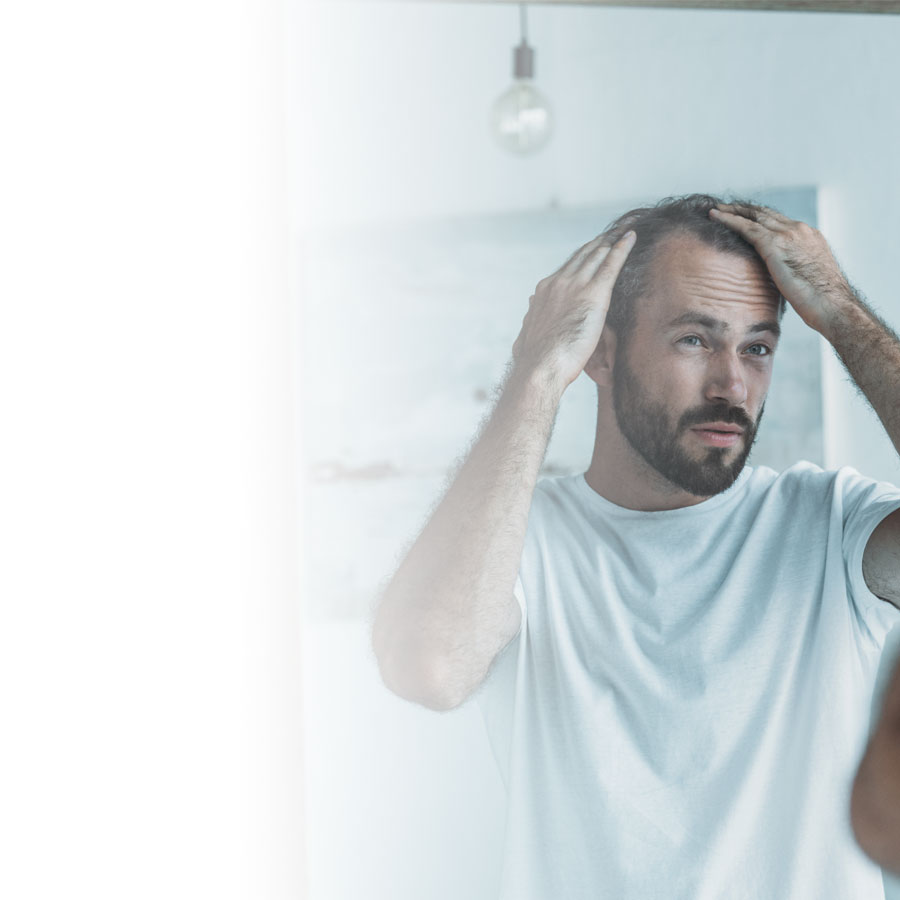Many women and men are affected by hair loss, especially after the age of 40. Find out the causes of this common problem.
What is alopecia?
Hair loss, also called alopecia, is a health issue that can manifest itself in various ways. Although alopecia mainly affects the hair on your head, it should be noted that all body hair can be affected. Therefore, the form that alopecia takes can vary from one person to another, whether in terms of the affected area or the severity of hair loss.
We typically lose about 100 hairs each day. This loss is compensated by the growth of new hair. Alopecia occurs when hair loss exceeds the growth of new hair, which results in thinning hair or areas without any hair at all.
The physical consequences of alopecia are essentially of an esthetic nature. However, its repercussions from an emotional and self-esteem perspective should not be overlooked.

What is androgenetic alopecia?
The most common type of alopecia is androgenetic alopecia, commonly called baldness. Men are more affected by it than women. In men, baldness manifests itself by a gradual loss of hair on the top of the head or a receding hairline at the upper forehead. In women, it usually causes thinning hair.
Androgenetic alopecia is presumed to be related to sex hormone activity, androgens, which include testosterone. Androgens are responsible for the sexual development of men, but also serve to regulate various functions in both men and women. Heredity also largely contributes to the development of androgenic alopecia.
What are the other types of alopecia?
Alopecia can take on other forms. For instance, aerata alopecia or pelade is a type of alopecia that occurs when the immune system attacks the scalp, more specifically the hair follicles. This causes a patchy loss of hair in various areas of the scalp, which then remain bald. In more serious cases, pelade can affect all of the hair on the body.
Hair loss can also be the result of scarring. This type of alopecia occurs following an injury or burn, or due to a disease that causes a lesion to the scalp, such as psoriasis or skin cancer.
Furthermore, hair loss can be associated to other diseases or the use of medications, chemotherapy or radiation therapy. In addition, rapid and temporary hair loss can be caused by emotional trauma, childbirth, major surgery or other significant events. This is what is called telogen effluvium. In this case, hair usually grows back in the months following the event that caused alopecia.
As you can see, hair loss can have multiple causes. We have listed the most common ones. If in doubt about the cause of hair loss, it’s preferable to speak to your doctor, who can identify the type of alopecia affecting you to better orient treatment.
Pharmacists can also provide information about the measures intended to prevent or slow down hair loss and inform you about the available products you can use. Don’t hesitate to speak to them.


